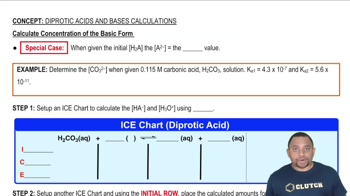Here are the essential concepts you must grasp in order to answer the question correctly.
Chemical Equilibrium
Chemical equilibrium occurs when the rates of the forward and reverse reactions are equal, resulting in constant concentrations of reactants and products. In this state, the system is dynamic, meaning that reactions continue to occur, but there is no net change in concentration. Understanding this concept is crucial for analyzing how changes in conditions affect the concentrations of substances in a reaction.
Recommended video:
Chemical Equilibrium Concepts
Equilibrium Constant (Kc)
The equilibrium constant (Kc) is a numerical value that expresses the ratio of the concentrations of products to reactants at equilibrium, each raised to the power of their coefficients in the balanced equation. It provides insight into the position of equilibrium; a large Kc indicates a reaction that favors products, while a small Kc suggests reactants are favored. Calculating Kc is essential for understanding the extent of a reaction under specific conditions.
Recommended video:
Equilibrium Constant Expressions
Concentration Calculations
Concentration calculations involve determining the molarity of a substance in a solution, defined as the number of moles of solute per liter of solution. In equilibrium problems, it is important to calculate the initial and equilibrium concentrations of reactants and products to apply the equilibrium expression correctly. This concept is fundamental for solving for unknown concentrations in equilibrium scenarios.
Recommended video:
Calculate Concentration of the Basic Form




